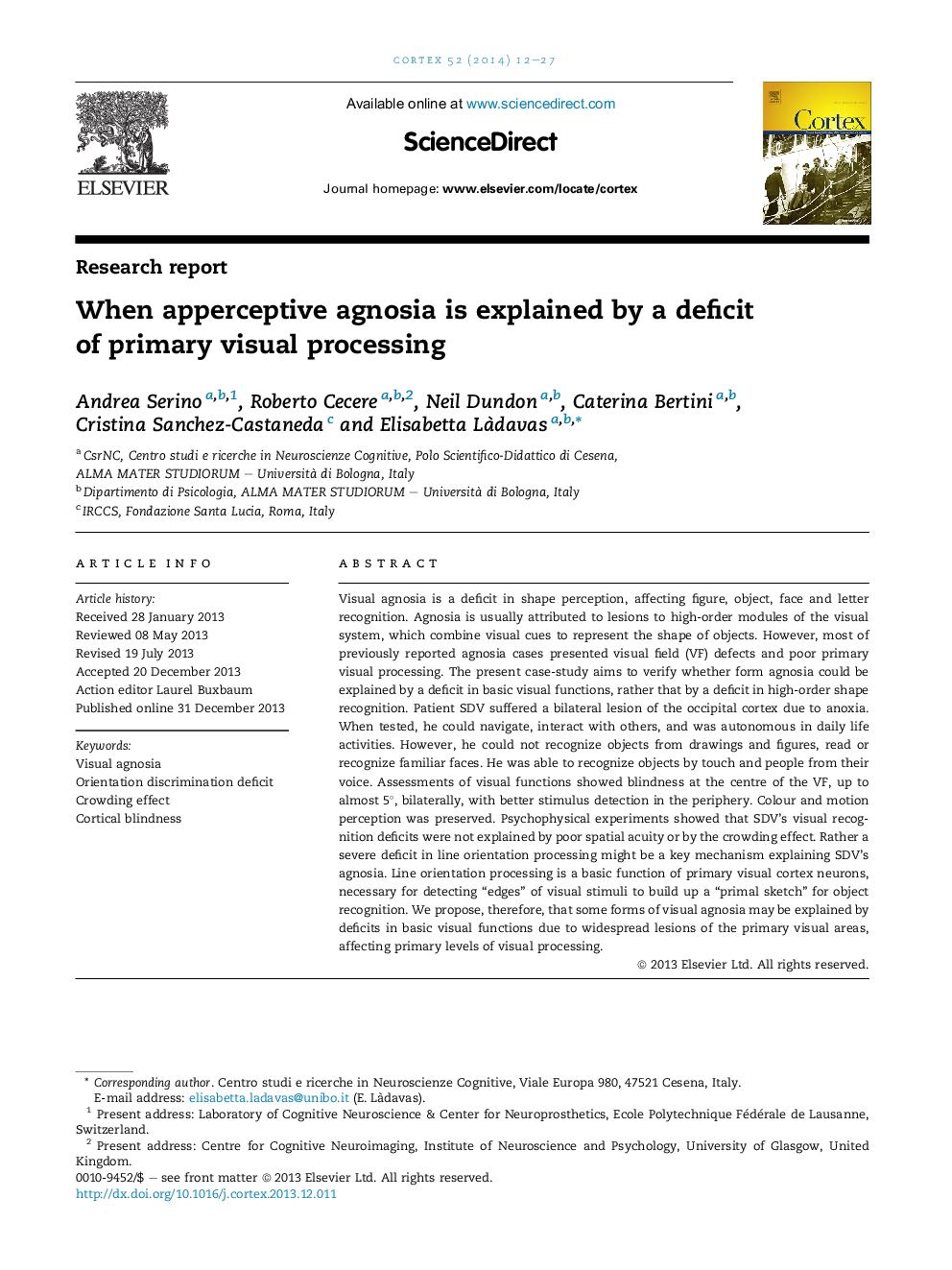| Article ID | Journal | Published Year | Pages | File Type |
|---|---|---|---|---|
| 7315876 | Cortex | 2014 | 16 Pages |
Abstract
Visual agnosia is a deficit in shape perception, affecting figure, object, face and letter recognition. Agnosia is usually attributed to lesions to high-order modules of the visual system, which combine visual cues to represent the shape of objects. However, most of previously reported agnosia cases presented visual field (VF) defects and poor primary visual processing. The present case-study aims to verify whether form agnosia could be explained by a deficit in basic visual functions, rather that by a deficit in high-order shape recognition. Patient SDV suffered a bilateral lesion of the occipital cortex due to anoxia. When tested, he could navigate, interact with others, and was autonomous in daily life activities. However, he could not recognize objects from drawings and figures, read or recognize familiar faces. He was able to recognize objects by touch and people from their voice. Assessments of visual functions showed blindness at the centre of the VF, up to almost 5°, bilaterally, with better stimulus detection in the periphery. Colour and motion perception was preserved. Psychophysical experiments showed that SDV's visual recognition deficits were not explained by poor spatial acuity or by the crowding effect. Rather a severe deficit in line orientation processing might be a key mechanism explaining SDV's agnosia. Line orientation processing is a basic function of primary visual cortex neurons, necessary for detecting “edges” of visual stimuli to build up a “primal sketch” for object recognition. We propose, therefore, that some forms of visual agnosia may be explained by deficits in basic visual functions due to widespread lesions of the primary visual areas, affecting primary levels of visual processing.
Related Topics
Life Sciences
Neuroscience
Behavioral Neuroscience
Authors
Andrea Serino, Roberto Cecere, Neil Dundon, Caterina Bertini, Cristina Sanchez-Castaneda, Elisabetta LÃ davas,
